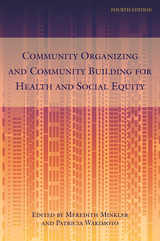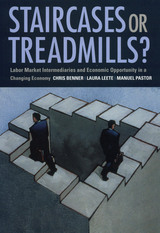
Many of the book’s contributors are leaders in their academic fields, from public health and social work, to community psychology and urban and regional planning, and to social and political science. One author was the 44th president of the United States, himself a former community organizer in Chicago, who reflects on his earlier vocation and its importance. Other contributors are inspiring community leaders whose work on-the-ground and in partnership with us “outsiders” highlights both the power of collaboration, and the cultural humility and other skills required to do it well.
Throughout this book, and particularly in the case studies and examples shared, the role of context is critical, and never far from view. Included here most recently are the horrific and continuing toll of the COVID-19 pandemic, and a long overdue, yet still greatly circumscribed, “national reckoning with systemic racism,” in the aftermath of the brutal police killing of yet another unarmed Black person, and then another and another, seemingly without end. In many chapters, the authors highlight different facets of the Black Lives Matter movement that took on new life across the country and the world in response to these atrocities. In other chapters, the existential threat of climate change and grave threats to democracy also are underscored.
View the Table of Contents and introductory text for the supplementary instructor resources. (https://d3tto5i5w9ogdd.cloudfront.net/wp-content/uploads/2022/02/04143046/9781978832176_optimized_sampler.pdf)
Supplementary instructor resources are available on request: https://www.rutgersuniversitypress.org/communityorganizing

Numbering over a third of California's population and thirteen percent of the U.S. population, people of Mexican ancestry represent a hugely complex group with a long history in the country. Contributors explore a broad range of issues regarding California's ethnic Mexican population, including their concentration among the working poor and as day laborers; their participation in various sectors of the educational system; social problems such as domestic violence; their contributions to the arts, especially music; media stereotyping; and political alliances and alignments.
Contributors are Brenda D. Arellano, Leo R. Chavez, Yvette G. Flores, Ramón A. Gutiérrez, Aída Hurtado, Olga Nájera-Ramírez, Chon A. Noriega, Manuel Pastor Jr., Armida Ornelas, Russell W. Rumberger, Daniel Solórzano, Enriqueta Valdez Curiel, and Abel Valenzuela Jr.

READERS
Browse our collection.
PUBLISHERS
See BiblioVault's publisher services.
STUDENT SERVICES
Files for college accessibility offices.
UChicago Accessibility Resources
home | accessibility | search | about | contact us
BiblioVault ® 2001 - 2024
The University of Chicago Press









